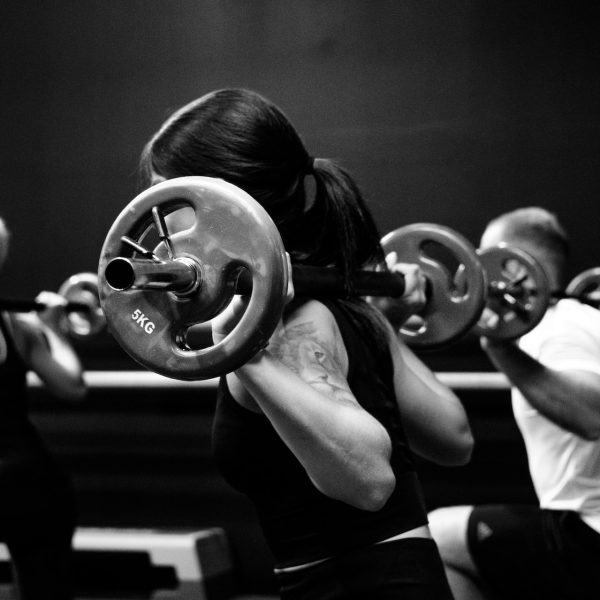Strength Training Exercises for Seniors: A Guide to Wellness
Seniors benefit significantly from strength training for various reasons. As individuals age, there are natural changes in the body that can lead to a decline in muscle mass, bone density, and overall strength. Incorporating strength training exercises into a senior’s routine can address these age-related challenges and provide a range of physical and mental health benefits. Here are some key reasons why seniors should engage in strength training:
Maintaining Muscle Mass: Aging often results in a gradual loss of muscle mass, a condition known as sarcopenia. Strength training helps counteract this by stimulating muscle growth and preservation, allowing seniors to maintain strength and functionality.
Improving Bone Density: Osteoporosis, a condition characterized by reduced bone density and increased frailty, is more common in older adults. Weight-bearing and resistance exercises, integral components of strength training, promote bone health by enhancing bone density and reducing the risk of fractures.
Enhancing Joint Flexibility: Strength training exercises involve a full range of motion, contributing to improved joint flexibility. This can alleviate stiffness and discomfort associated with aging and conditions like arthritis.
Promoting Joint Stability: Strengthening the muscles around joints provides added support, enhancing stability and reducing the risk of falls. This is crucial for seniors, as falls can have severe consequences, including fractures and other injuries
.
Improving Metabolism: Maintaining muscle mass is linked to a higher resting metabolic rate. Strength training helps seniors regulate their weight more effectively and can contribute to better overall metabolic health.
Managing Chronic Conditions: Strength training has been shown to have positive effects on chronic conditions such as diabetes, heart disease, and arthritis. It can help manage symptoms and improve overall health outcomes.
Enhancing Functional Abilities: Strength training targets movements relevant to daily activities, such as lifting, bending, and reaching. This translates into improved functional abilities, allowing seniors to maintain independence and carry out everyday tasks with greater ease.
Boosting Cognitive Function: Exercise, including strength training, has been associated with cognitive benefits. Regular physical activity can help maintain cognitive function, reduce the risk of cognitive decline, and enhance overall mental well-being.
Enhancing Mood and Quality of Life: Physical activity, including strength training, releases endorphins, which are natural mood enhancers. Regular exercise is linked to improved mental health, reduced stress, and an overall higher quality of life for seniors.
Fighting Frailty: Frailty is a condition characterized by increased vulnerability to health stressors and decreased physiological reserves. Strength training is a powerful tool in combating frailty, promoting resilience and independence in older adults.

Strength Training Exercises for Seniors
As we age, maintaining strength and mobility becomes increasingly important for overall health and well-being. Engaging in a well-rounded strength training program can enhance muscle mass, bone density, joint flexibility, and functional abilities. Before embarking on any new exercise routine, it’s crucial for seniors to consult with their healthcare provider to ensure that the chosen activities are safe and suitable for their individual health status.
Bodyweight Squats
- Stand with your feet shoulder-width apart.
- Lower your body by bending your knees and pushing your hips back, mimicking the motion of sitting in a chair.
- Keep your chest up and your back straight.
- Return to the starting position with controlled movements.
Wall Push-Ups
- Stand facing a wall with your arms extended at shoulder height.
- Lean forward and place your hands on the wall.
- Perform a push-up by bending your elbows and then straightening them.
Chair Squats
- Utilize a sturdy chair for support.
- Sit back into the chair as if preparing to sit down, and then stand back up.
- Ensure your back remains straight, and your chest is lifted.
Leg Raises
- Sit on a chair with a straight back and hands on the sides for support.
- Lift one leg straight out in front of you and hold for a few seconds.
- Lower it back down and repeat with the other leg.
Seated Leg Press
- Sit in a sturdy chair with a straight back.
- Extend one leg straight out in front of you and hold for a few seconds.
- Lower it back down and repeat with the other leg.
Bicep Curls
- Hold a light weight in each hand, such as water bottles or dumbbells.
- Keep your elbows close to your sides and curl the weights towards your shoulders.
Tricep Dips
- Sit on the edge of a sturdy chair with hands gripping the edge.
- Slide your bottom off the chair and lower your body by bending your elbows.
- Push back up to the starting position.
Heel Raises
- Stand with your feet hip-width apart.
- Lift your heels off the ground, rising onto your toes.
- Lower them back down.
Standing Calf Raises
- Stand with your feet hip-width apart near a wall or chair for balance.
- Rise up onto your toes, lifting your heels off the ground.
- Lower them back down.
Knee Extensions
- Sit in a chair with a straight back.
- Extend one leg straight out in front of you and hold for a few seconds.
- Lower it back down and repeat with the other leg.
Always initiate your workout with a proper warm-up and incorporate stretching exercises to enhance flexibility. Perform each exercise in a deliberate and controlled manner, focusing on maintaining proper form. Gradually increase the intensity and duration as your strength improves over time. If there are any health concerns, it is essential to seek guidance from a healthcare professional or a qualified fitness trainer to ensure a safe and effective exercise routine tailored to individual needs.








